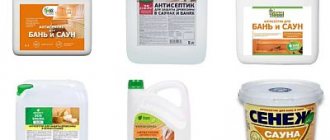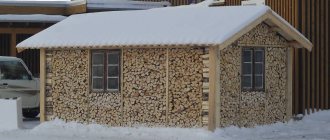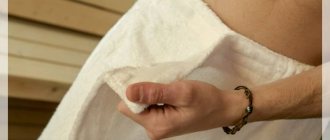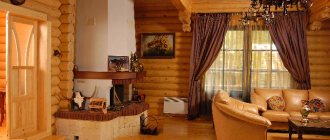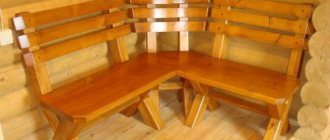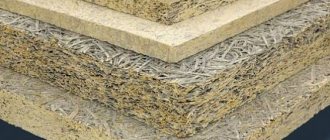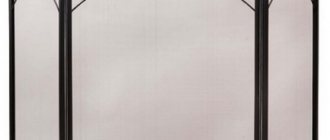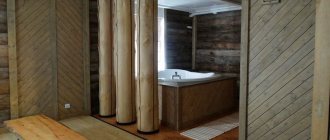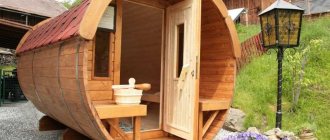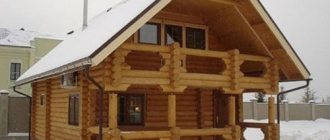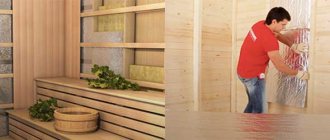Do you dream of glowing with great health and charming beauty? In this case, experts recommend regularly visiting the steam room. Don't have enough time? Get your own sauna. Is it already under construction? This means that soon you will have to purchase facing material for the interior decoration of the steam room.
Today, the market is overflowing with all kinds of raw materials, which are in incredible demand, as they can make the interior of a bathhouse truly magical. However, the true queen is wood, which pampers with its intoxicating aroma, fabulous beauty and healing effects on the body.
But before you buy this or that species, you need to know that wood for finishing a bathhouse is not just a facing raw material, but a real healer who knows all the innermost secrets of the human body. Therefore, it is very important to choose the breed that is most appropriate in a particular bathhouse.
Don't know anything about the properties of wood? Nothing wrong with that! I, your faithful servant, will now tell you everything.
Types of wood for baths and saunas
The division into types is made according to two criteria: by type of lumber and by species. In the first case, there are two main types: lining and edged boards.
- Lining. Convenient type of lumber for installation. It is a profiled board with locks cut out along the edges. They allow strips of lining to be very tightly fitted to each other, forming a continuous surface. This type of finishing looks good both on the ceiling and on the walls in the bathhouse. For steam rooms and washing rooms, lining made of hardwood is usually used. The rest room can be lined with pine needles.
- Edged board. Most often it is used for finishing floors and ceilings. Durable hardwoods are the most common.
Sometimes unedged boards are also used. It allows you to create interiors in the style of a taiga bathhouse.
By species, wood is divided into coniferous and deciduous.
- Hardwood is suitable for finishing all rooms in the bathhouse. Most hardwoods are durable and can withstand warm, humid atmospheres. They can be used both as a floorboard and as a finishing material for walls and ceilings. In addition, treatment with special means can significantly increase the service life of linings and boards.
- Coniferous species are not inferior to deciduous ones in terms of thermal insulation qualities. However, they have one drawback - at high temperatures, resin is released from the wood. Therefore, steam rooms are rarely lined with pine needles. The optimal place of application for conifers is rest rooms, corridors and bathrooms.
Video - Which tree is best for a bathhouse
Shelf material
Without question: the only(!) suitable material for shelves in a bathhouse is wood. Below we will look at the properties of the most popular species, but for now let's take a closer look at how the method of cutting the trunk affects the properties of the lumber obtained from it.
Of the entire variety of lumber that is made from felled trunks of different trees, we are only interested in the following varieties:
- log and half-log;
- unedged, edged and slab boards.
Log shelves
a log a tree trunk with the bark removed. It may be rounded, that is, have the same diameter along the entire length, or it may not be, if we are talking about some kind of individual project with non-standard material. A half-log is half of a whole log, sawn lengthwise down the middle.
Well, in our opinion, it would be extremely inhumane for visitors to the steam room to make shelves in the bathhouse out of logs . Unless, of course, the owner wants to reduce the time spent in the steam room in this way. You can make arms or legs from a solid log.
If the fantasy has come to make shelves in a bathhouse from a log, then let it be at least half a log, with the flat side facing the person.
Of course, such a choice may be a tribute to the style - “wild” or “taiga” - they are now called differently, but in general they are drawn to antiquity, to ethnicity.
Board
With a board everything is more complicated. The trunk can be cut into boards in different ways: tangential and radial.
They will differ from each other not only aesthetically (by the presence or absence of texture stains), but also in physical and mechanical parameters . In particular, the ability to collect water.
But because of the smaller yield of radial boards when cutting, their cost is higher than that of tangential ones.
Now let’s pay attention to the tangential varieties : it is clear that each trunk will have two “humps” - they are called “slab”. (The diagram above is not the most indicative; there are less rational ones.)
Everything else without additional processing can be an “ unedged board ,” that is, with remnants of bark and a more or less beveled edge. The edged board will be formed only after the uneven edges have been cut off.
Aspen board on a shelf
So, in most cases , carpentry (which includes our shelf) is made from edged boards with the correct geometry. But when it comes to art or its imitation, anything becomes acceptable material.
In ethnic style, the effect of antiquity and artlessness can be achieved through the use of an edge that is uneven in shape, but sufficiently polished. Therefore, you can find polished slabs and bathhouse shelves made from unedged boards.
Cedar
Finishing a bathhouse with cedar allows you to create beautiful and noble interiors. The surfaces have a pronounced texture and smoothly transitioning shades into each other. In addition, cedar is immune to temperature changes and humidity levels. This tree is not liked by insect pests; fungus on its surface is very rare.
The aroma that appears in rooms decorated with cedar is also attractive. The source of the pleasant smell is the essential oils contained in large quantities in this wood. However, you need to understand that after some time these oils will disappear and the aromatic effect will stop. There are two more disadvantages of cedar: high cost and the ability to release drops of resin.
Finishing the bath with cedar
Oak
Oak boards and lining are durable. The dense structure does not allow moisture to penetrate into the wood and destroy it. Oak is also attractive from an aesthetic point of view: the surface of the boards has an original texture.
Disadvantages include high cost, as well as difficulties with finishing work associated with the high hardness and weight of the material.
Finishing a bath made of oak
Useful video
A very interesting video in which wood moisture tests are carried out and the results are unexpected not only for us, but also for the experimenters themselves . We cannot agree with the authors of the video that reducing moisture during impregnation does not matter. Has for the wood itself, its service life.
***
We advise everyone who is busy building or improving their bathhouse to subscribe to our Telegram channel - this way you will always be aware of new materials appearing on the site, and we try to make them as informative and useful as possible.
Larch
Resinous larch surfaces have a reddish tint that does not change over time. This tree is notable for containing a wide range of substances beneficial to humans that are released when heated.
In terms of density, larch is close to oak. Therefore, in a hot and humid bathhouse atmosphere, it can also last for decades.
The disadvantages of this tree include the difficulty of mechanical processing and poor thermal insulation qualities.
Finishing a bathhouse made of larch
Alder
Alder has a valuable quality - it has low thermal conductivity. This allows you to avoid burns from contact with heated wood in the bathhouse. Alder boards and linings smell pleasant and have a reddish tint. Moreover, these qualities acquire even more pronounced forms over time.
For a steam room, alder finishing fits all criteria. It does not warp due to shrinkage, does not emit drops of resin, and successfully withstands regular exposure to hot steam.
Among the disadvantages, the difficulty of mechanical processing of alder is noted. This material is not flexible, although it is quite soft. Taking into account the fact that perfectly smooth alder lining is almost never found on the market, it can be difficult to properly sheath a steam room with this material. In addition, alder is not the cheapest tree.
Finishing a sauna made of alder
Linden
The main advantage of linden boards and lining is their ability to have a beneficial effect on the respiratory system. The reason for this is the high concentration of active substances in wood. Linden is easy to machine. The lining made from it does not crack or curl as the bathhouse is used. Even taking into account the softness of the wood, alder can last for many years.
The freshly cut surface of linden has a slight texture and a pleasant pink color. At the same time, there are no knots or resinous discharge on it.
Among the shortcomings, soiling is noted, which manifests itself in the form of spots on the surface. However, sanding easily eliminates this problem, simultaneously restoring the original color.
Finishing a bath from linden
What is abash
This African oak has many other names - abachi, samba, ayous, abacha, etc. Belongs to the malvaceae family. The valuable wood of the abash tree for baths is durable, soft and resistant to shape. The material can range in color from pale yellow to off-white. The wood has an even, fine texture; there are barely noticeable stripes along the radial cuts.
This African bath tree grows in equatorial forests. Its height reaches 40 meters, and its trunk diameter is 3 meters. Since the crown on it is located only at the very top, there are no knots on the trunk. This circumstance makes the work of carpenters and joiners easier.
Despite the significant cost of wood, abash is very popular. This is an elite material that can be compared in value to mahogany, used in the decoration of apartments and houses. Abashi wood will cost much more than traditional wood species. The reason for the high cost is the need to transport the material from the African continent.
Birch
Birch lining is used to decorate the steam room only in the case of a very limited budget. This type of wood does not tolerate fluctuations in temperature and humidity. Over time, surfaces begin to rot and warp. This is due to the low fiber density.
At the same time, birch is perfect for decorating a recreation room. The fumes from this tree help fight colds and have a general strengthening effect on the body.
In addition, birch is a light and elastic material. Fitting the lining from it will not cause any difficulties. In the absence of sharp temperature fluctuations, such cladding can last for many years, simultaneously serving as additional thermal insulation.
Finishing a birch bath
Aspen
In relation to the conditions of a sauna or bathhouse, finishing with aspen lumber has a number of advantages:
- does not warp or crack;
- resistant to moisture and high temperature;
- not susceptible to rot and damage by insect pests;
- does not deform under loads;
- due to its low density, it heats up slightly, which eliminates burns;
- no tar discharge;
- has a healing effect on the human body;
- has a peculiar aroma;
- easy to process.
The disadvantage is that the wood darkens as the bath is used.
Finishing a bath made of aspen
Conifers - pine, spruce
Softwood lining is one of the cheapest finishing materials on the market. It retains heat well and has a very pleasant aroma.
However, the use of these lumber for finishing baths and saunas is quite limited. Due to the high content of resins in wood, it is completely unsuitable for finishing steam rooms. As coniferous wood heats up, a significant amount of resin begins to release.
In addition, conifers quickly become unusable with regular contact with water or steam. Therefore, in relation to baths, coniferous lining can only be used for finishing such types of premises as a recreation room or a bathroom.
Finishing a pine bath
Board cladding for steam room
The most common method of laying lumber cladding involves carrying out work in several stages:
- Initially, an unedged board is stuffed onto the padded vertical slats of the sheathing so that the distance between adjacent edges does not exceed 5-10 mm;
- The formed plane rough cladding from inexpensively purchased unedged aspen boards for the sauna is processed with a belt sander;
- The remaining gaps between the joints of vertically packed boards are closed with a lath or block house.
After treatment with wax, a steam room lined with aspen boards looks no worse than one trimmed with linden or cedar lining.
Advice! If you want to make the decoration of the walls in the steam room truly original, then the board for the steam room is subjected to preliminary finishing and shaped cutting.
Short sections, figures and fragments are laid on a pre-assembled frame made of spruce slats. After assembly, the coniferous wood is hidden under a linden or aspen lining, and no side effects, except for the slight smell of freshly cut wood and heated rosin, are felt in the steam room.
For the production of shaped fragments, trimmings and “short pieces” of full-size aspen or ash boards are used, so the method allows not only to provide an effective design for visiting the bathhouse, but also to significantly save on material.
For comparison, a cube of scraps 0.5-1 m long costs half as much, and pieces up to 0.5 m can be bought five times cheaper than a cube of two-meter boards.
Abashi
Abashi oak is an African species of oak, widespread throughout our country. Therefore, many of its characteristics are similar to classic oak:
- high strength;
- durability;
- immunity to temperature changes;
- resistance to moisture.
- However, there are significant differences:
- abashi, unlike ordinary oak, is much lighter wood;
- Due to the very low thermal conductivity, burns are completely eliminated. To the touch, even in a heated steam room, the abashi will always have the temperature of a human body.
In addition, this wood can be sanded to a perfectly smooth state that will not deteriorate even after many years of intensive use.
The only drawback is the high cost due to long-distance transportation from Africa.
Finishing a bathhouse from abashi
Prices for wooden lining
Lining for baths
Dimensions
Characteristics:
- Thickness - from 20 to 60 mm. The more popular range is from 20 to 35 mm.
- Length - most often you come across lumber 2.5 and 4.6 meters long.
- Width - from 10 to 25 cm.
The wider the board, the fewer joints there will be, but the risk of cracks increases. To make a solid, high-strength flooring, it is better to use narrow slats glued together into one panel.
The thicker the boards, the more times you can renew a wooden floor. To restore the integrity of the flooring, repair cracks and dents, you need to remove the surface layer of wood, seal the unevenness with a special mastic, and sand the surface.
What is important to remember when choosing wood for finishing baths and saunas
High temperatures and high levels of humidity, characteristic of the atmosphere of a bathhouse or sauna, impose certain requirements on finishing materials.
- The wood from which the boards or lining are made must be absolutely safe. Some breeds may release toxic or overly aromatic substances when heated. Therefore, before making your final choice, you need to make sure that there are no such manifestations.
- Wood trim should have as little thermal conductivity as possible. This will get rid of burns. This point is of utmost importance when choosing wood for finishing steam rooms.
- It is advisable to use one type of wood in one room. Different breeds change color differently when exposed to hot water and heat. Therefore, there is a risk of getting a completely unexpected combination of finishing colors.
- If you are on a limited budget, do not worry about the inability to purchase expensive cedar or oak. Among the cheaper options you can find materials with similar characteristics: alder, aspen, linden, etc.
- In the steam room, it is advisable to use the most durable wood available. In other rooms, cheaper options will also successfully cope with their task.
Video - Which lining is better for a bathhouse
It is also worth considering that without proper care, even the highest quality and most expensive lining will eventually become unusable. Therefore, it is worth finding out in advance what specific means will need to be used to prevent rapid aging of the material.
The variety of types of wood suitable for finishing rooms in a bathhouse or sauna allows you to implement any design solutions. However, before choosing one or another option, you must make sure that the wood will withstand the expected operating conditions and will not cause harm to human health.
Golden hit parade of “bath” wood species
Preface
As a rule, a Russian bathhouse consists of the following premises:
- dressing room - a room that serves as a regular locker room;
- washing room - a room designed for performing water procedures before and after visiting the steam room;
- steam room - the central room, which is the “heart” of the bathhouse, since it is in it that the stove-heater flaunts;
- relaxation rooms are a place for a pleasant pastime after and before visiting the dressing room, steam room and washing room.
Of course, if you wish, you can arrange many other rooms. It all depends on the taste, imagination and financial capabilities of the owners.
Why this preface? And then, so that you understand which wood species to give preference when decorating this or that room.
